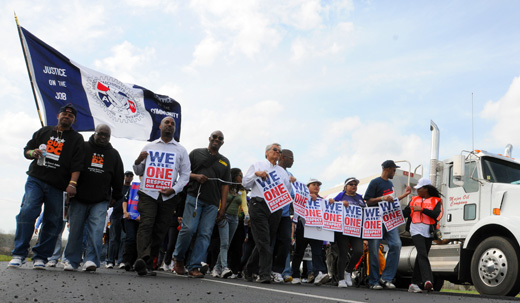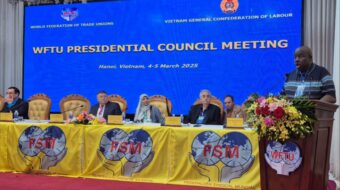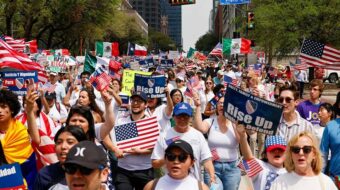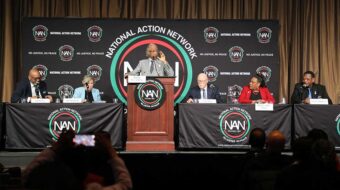
WASHINGTON – When Gill Parr, a veteran who served from 1962 to 1966 in the U.S. Air Force, went to vote recently in a local school board election in Racine, Wis., the officials at the polling place prevented him from casting a ballot.
“They told me that my military ID card, the one I use to get care at the Veterans’ Hospital, was unacceptable,” he said, “because it wasn’t on the list of approved state-issued photo IDs. What is going on in this country? I have voted all my life. These voter ID laws must be stopped.”
If the nation’s unions, civil rights organizations and youth groups have their way this year no one else will have to overcome the hurdle facing Parr when he went to vote in that local school board election.
“Millions,” vowed AFL-CIO Executive Vice President Arlene Holt Baker, “will be armed with whatever it is they need in order to vote this November.”
At a packed press conference here today the AFL-CIO, joined by the NAACP, the National Council of La Raza and the Generational Alliance, announced the launching of what could be the biggest voter protection effort in U.S. history.
“We are launching the strongest voter protection campaign ever because the attacks from the right wing on the right to vote, on the right to collective bargaining, and on the minimum wage are more extensive and ferocious than ever,” Holt Baker explained. She called the new voter ID laws “nothing more than a new form of poll tax and Jim Crow. “
Unions will also step up efforts to get all their members to vote. “There are 2.3 million who are unregistered,” Holt Baker said, “and there are 500,000 of them in the six states on which the labor movement is concentrating its campaign for pro-worker candidates … We will register every one of those 500,000 in those six states.”
The six states are Pennsylvania, Florida, Ohio, Michigan, Wisconsin and Nevada. Labor’s efforts will involve putting hundreds of thousands of boots on the ground, Holt Baker said. “We’ll never outmatch the right wing in the money it can raise but we can overtake them again with our ability to mobilize our human resources.”
When one reporter challenged her by citing the failure of labor’s recent campaign to recall Republican Gov. Scott Walker in Wisconsin she said, “We didn’t succeed in the recall but a million signed the petition and we built a strong coalition and movement that gave control of the state Senate to worker–friendly candidates. Walker didn’t gain anything; he in fact lost some ground and we built up the forces that will help us in the campaign going forward.”
“And look at Ohio,” she added. “In the process of defeating a right–wing anti–union law we also built the movement that is helping us go forward on voter protection and on our program for the 2012 elections.”
Outside the concentration states, Holt Baker said, unions will partner with civil rights and other groups. One such group, the NAACP, will be focusing its efforts in the South.
“In the last 12 months more states have enacted voter suppression laws than at any time since the post-Civil War period,” the NAACP’s CEO Benjamin Jealous told reporters. “But we probably shouldn’t be surprised about this,” he said, “because in 2008 we saw the biggest and most diverse outpouring of voters, including the young, who actually broke the color barrier in the White House.”
Town hall meetings are being organized in hundreds of communities where Latino voters predominate, according to Clarissa Martinez-De-Castro, director of civic engagement for the National Council of La Raza. The town hall meetings will be focused in Florida, Colorado, Nevada, Pennsylvania, California, New York and D.C., she said.
Youth participation in the 2008 elections was larger than it ever had been before, with 51 percent turning out to vote. “The time for scapegoating the youth as people who just don’t vote is over,” said Carmen Berkley, deputy director of the Generational Alliance, a coalition of more than 20 national youth organizations active in civic affairs.
“The right wing knows this and that is why they have made it difficult for youth living in one place but studying in another to vote. And it’s not just students but frustrated young people in the communities, workers and those looking for work who see no chance at empowerment unless they come out and vote. Young people are getting the message that if they want power then they have to vote and we are out there working to register them and to protect the rights of the youth who are registered.”
Photo: Labor union leaders and members march down Highway-80 East during the Selma to Montgomery Voting Rights March re-enactment, on March 7, near White Hall, Ala. Demonstrators marched to protest Alabama’s voter ID and immigration laws. Julie Bennett/AP











